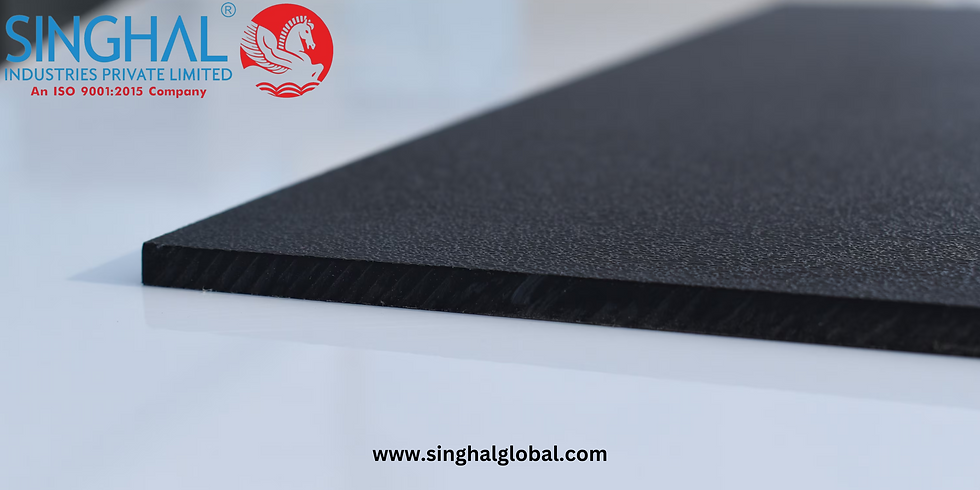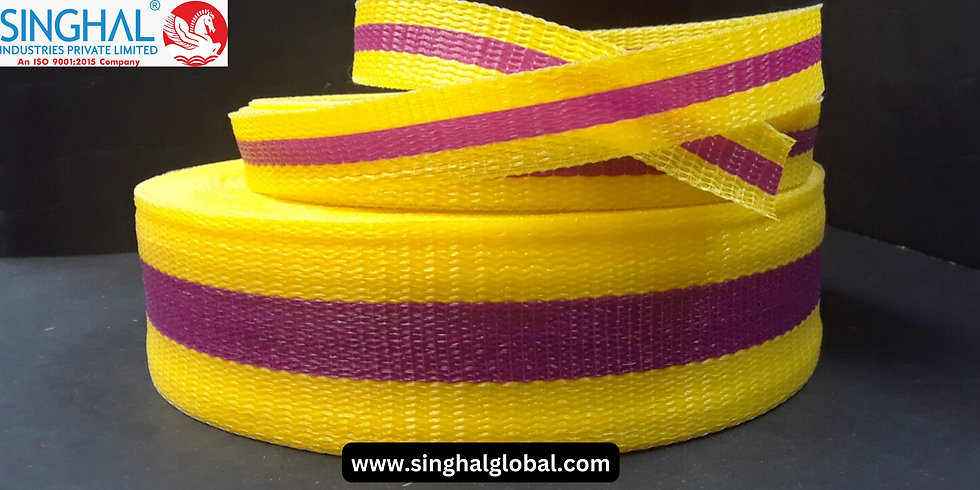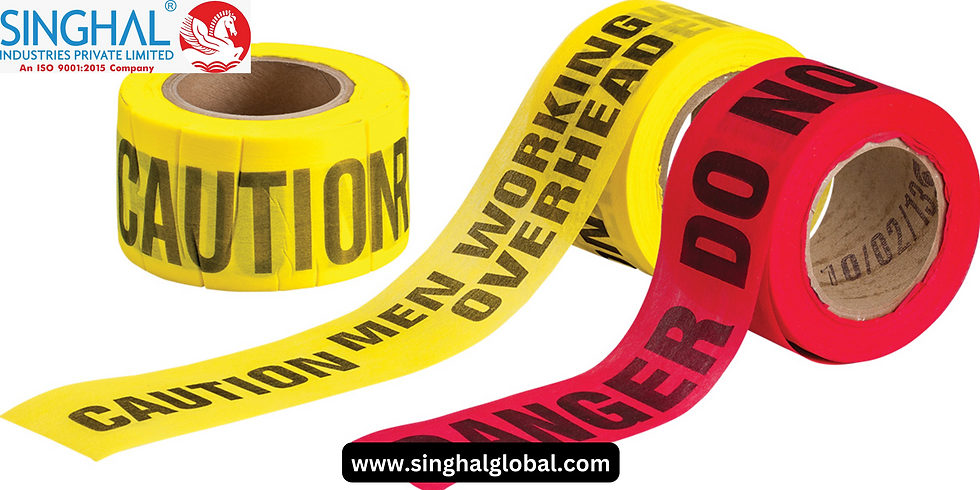Understanding the Benefits of HDPE Pond Liners for Your Water Management Needs
- Digital Mkt
- Aug 12, 2024
- 4 min read
In the realm of water management, particularly in pond and reservoir applications, the choice of lining material can significantly impact the longevity and effectiveness of the system. High-Density Polyethylene (HDPE) pond liners have emerged as a top choice due to their numerous advantages over traditional lining materials. This article delves into the benefits of HDPE pond liners, exploring why they are an excellent investment for various water management needs, and addresses frequently asked questions to provide a comprehensive overview.

What is an HDPE Pond Liner?
An HDPE pond liner is a flexible and durable material made from high-density polyethylene, a type of plastic polymer. HDPE is renowned for its high strength-to-density ratio, making it an ideal choice for applications that require robust and long-lasting performance. HDPE pond liners are used to line ponds, reservoirs, and other water bodies to prevent leaks and ensure the containment of water The price of HDPE pond liners can vary depending on factors such as thickness, size, and supplier.
On average, you might expect to pay between ₹100 to ₹300 per square meter. For precise pricing, it's advisable to contact local suppliers or manufacturers. For instance, if you are looking for HDPE Pond Liner For Sale in Bangalore, reaching out to local suppliers like Singhal Industries can provide specific price details..
Key Benefits of HDPE Pond Liners
1. Durability and Strength
One of the standout features of HDPE pond liners is their exceptional durability. HDPE is highly resistant to punctures, tears, and abrasions, making it suitable for environments where physical damage is a concern. The material’s strength ensures that it can withstand the weight of the water, as well as any external pressures or impacts, such as from heavy machinery or debris.
2. Chemical Resistance
HDPE pond liners exhibit excellent resistance to a wide range of chemicals, including acids, bases, and oils. This property is particularly beneficial in industrial applications or areas where the pond water may come into contact with chemical substances. The resistance to chemical degradation ensures that the liner maintains its integrity and performance over time.
3. UV Resistance
Exposure to ultraviolet (UV) rays from the sun can cause many materials to deteriorate. However, HDPE pond liners are designed to withstand prolonged UV exposure without significant degradation. This UV resistance is crucial for maintaining the liner's effectiveness and extending its service life, especially in outdoor settings where sun exposure is inevitable.
4. Low Permeability
HDPE pond liners have a low permeability rate, which means they effectively prevent water from seeping through the material. This property is essential for maintaining the water level in ponds and reservoirs, reducing the risk of leakage, and minimizing the need for frequent refilling. The low permeability also helps in preserving water quality by preventing contamination from external sources.
5. Flexibility and Ease of Installation
Despite their strength, HDPE pond liners are highly flexible, which facilitates ease of installation. The material can be easily shaped and fitted to the contours of the pond or reservoir, ensuring a snug and secure fit. This flexibility also simplifies the repair process in case of any damage, as the liner can be patched or welded without requiring complete replacement.
6. Environmental Impact
HDPE is a recyclable material, which aligns with growing environmental concerns. Using HDPE pond liners supports sustainability efforts by reducing the environmental footprint associated with pond lining materials. Additionally, the longevity and durability of HDPE liners contribute to a reduction in waste, as they do not need to be replaced frequently.
7. Cost-Effectiveness
While the initial investment in Hdpe Pond Liner Price might be higher compared to some other lining materials, their durability and low maintenance requirements result in long-term cost savings. The liner’s resistance to damage and chemical degradation means fewer replacements and repairs, ultimately providing a more cost-effective solution over its lifespan.
Conclusion
HDPE pond liners represent a significant advancement in water management technology, offering a blend of durability, chemical resistance, UV stability, and environmental benefits. Their ability to provide a secure and long-lasting solution for ponds and reservoirs makes them a popular choice among homeowners, landscapers, and industrial applications alike.
Whether you are considering HDPE pond liners for a new project or looking to replace existing liners, understanding the benefits and options available can help you make an informed decision. For those in Hdpe Pond Liner Bangalore and beyond, contacting local suppliers such as Singhal Industries can provide valuable insights and access to high-quality HDPE pond liners tailored to your specific needs. Frequently Asked Questions (FAQ)
Where can I purchase HDPE pond liners?
HDPE pond liners are available through various suppliers and manufacturers. If you are in Bangalore, local suppliers can provide you with options tailored to your specific needs. Companies like Singhal Industries offer a range of HDPE pond liners and can assist you in finding the right product for your water management project.
How do I determine the right thickness of HDPE pond liner for my project?
The appropriate thickness of the HDPE pond liner depends on several factors, including the size of the pond, the type of water body, and the potential for physical damage. For general applications, a thickness of 0.5 to 1 mm is often sufficient. However, larger ponds or those subjected to more stress may require thicker liners. Consulting with a supplier or expert can help you choose the right thickness for your specific requirements. Can HDPE pond liners be repaired if damaged?
Yes, HDPE pond liners can be repaired if they are damaged. Small tears or punctures can often be patched using HDPE liner repair kits, which include adhesive and patch materials. For larger or more complex damage, professional welding services may be required to ensure a seamless and watertight repair. Regular inspection and maintenance can help identify and address issues before they become significant problems.
How do I install an HDPE pond liner?
Installing an HDPE pond liner involves several steps:
Preparation: Clear and level the pond area, removing sharp objects or debris.
Liner Placement: Unroll and lay out the HDPE liner, ensuring it covers the entire pond area with some overlap at the edges.
Fitting: Adjust the liner to fit the contours of the pond, making sure there are no wrinkles or folds.
Securing: Anchor the liner in place using appropriate methods, such as weights, stakes, or a gravel base.
Sealing: If needed, weld or seal the edges to ensure a watertight fit.
For best results, follow the manufacturer's instructions and consider seeking professional assistance for complex installations.



Comments